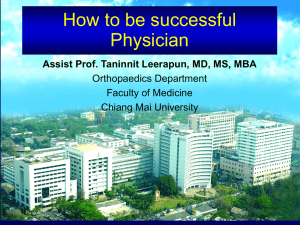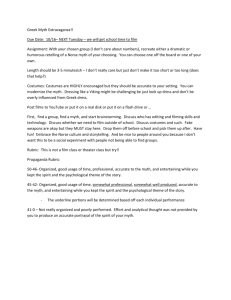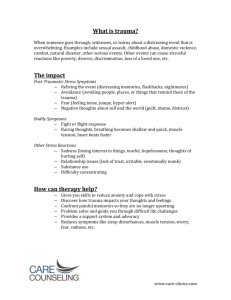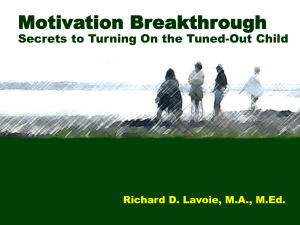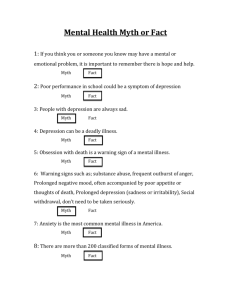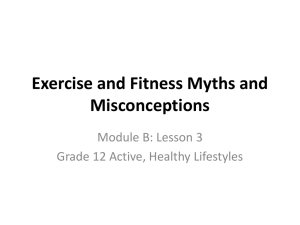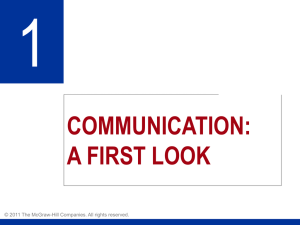Myths - Senior Advocate Online
advertisement
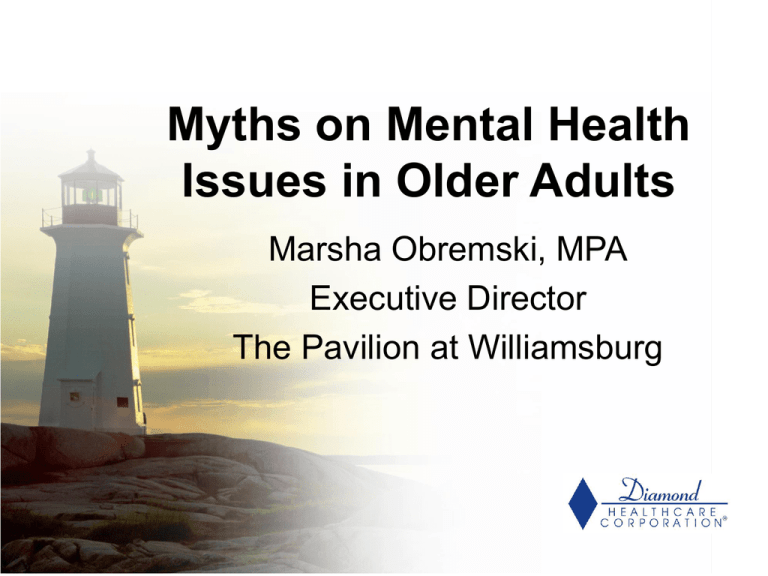
Myths on Mental Health Issues in Older Adults Marsha Obremski, MPA Executive Director The Pavilion at Williamsburg DISCLAMIER All views or opinions presented are solely mine and do not represent those of Diamond Healthcare Myth: Most inpatient psychiatric admissions come from LTC facilities. Fact: A higher percentage of admissions are coming from home. 2007 38% 2010 51% Myth: Memory Impairment and Depression are related. Fact: They can be related, but studies are inconclusive. Depression does not always affect memory, but memory impairment may cause depression. There are multiple contributing factors such as poly-pharmacy and unresolved grief. Myth: Older adults are at a higher risk for suicide. Fact: Young adults ages 40-59 have the highest rates of depression and suicidal attempts, but males 85 and older have the highest rate of completion. Myth: The Psychiatric diagnosis drives the treatment plan. Fact: • The diagnosis is a billing tool. • Quality treatment plans take into consideration social issues, medication issues, personality issues, behavioral issues, medical problems and resources. Myth: Psychotropic medications have increased the risk of falls in Long Term Care facilities. Fact: Multiple issues have to be evaluated as contributors to patient falls. June issues of the Journal of the American Geriatric Society and The Annals of Long-Term Care noted that studies are inconclusive. ALL medications must be reviewed on a regular basis. Myth: All things resolve in time…Time heals all wounds (physical and emotional). Fact: Misdiagnosis of residual trauma plagues older adults. Case Study 82 year-old female is having difficulty adjusting to living at a personal care home: • Sleep disturbance • Appetite disturbance • Crying spells • Isolating • Begging family to please let her go home • Irritability and anger Diagnosis: Depression or Adjustment Disorder with Depressed Mood Residual Trauma Sexually abused as a child and never told anyone during her 82 years. • Fear of the dark – her children said she always slept with the lights on. Her roommate did not want the lights on. • Staff coming in her room at night re-traumatized her • She began having nightmares about the trauma • She couldn’t connect the dots of what was going on because she thought she was “over it” Without therapy, this woman would have continued to suffer. It is likely her symptoms would have been treated via poly-pharmacy. Myth: Mental health issues arejust part of normal aging process. “You are just getting old” Fact: Despite the development of the specialty of Geriatric Psychiatry, older Americans continue to be the unrecognized group with increasing rates of untreated mental health disorders, alcoholism and prescription drug abuse. Myth: Medication alone is the best treatment for older adults. Besides they are too set in their ways to benefit from counseling. Fact: Medication and group psychotherapy has the best results. We need to continue to work on “buy in” from the medical community and those who work with older adults. Myth: Outreach and education has decreased the stigma associated with mental health Treatment. Fact: • Only 39% of people who suffer from a mental health disorder get treatment from a mental health professional. • 74% of people seek treatment from their primary care physician. • 50% are misdiagnosed. • 80% are given too little medication for too short of time or multiple meds over a prolonged period of time. The Pavilion at Williamsburg Place OPENING JANUARY 2012 • Older Adult Program • Acute Adult Program • Psychiatrically Impaired Professionals • Military Personnel and Dependents



